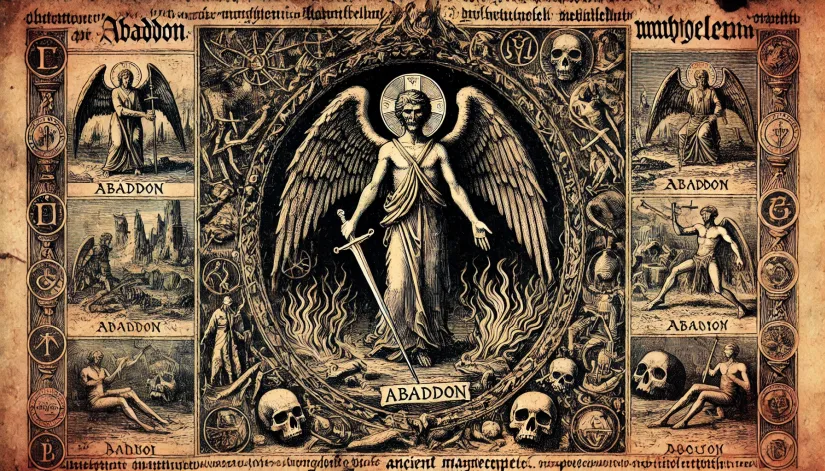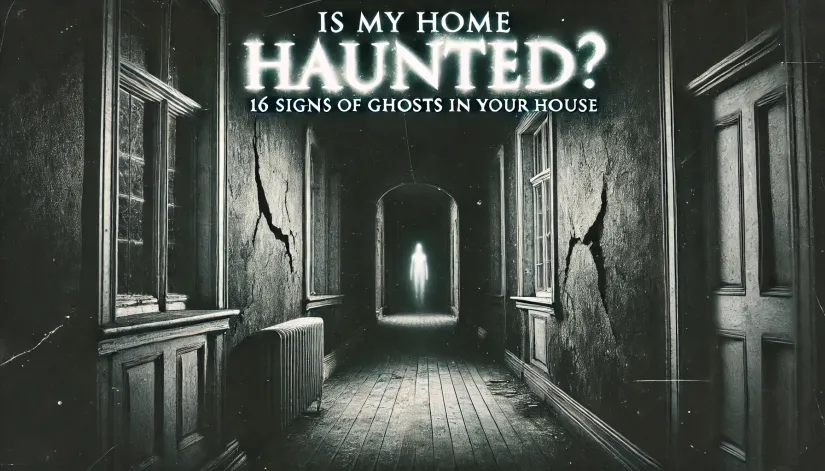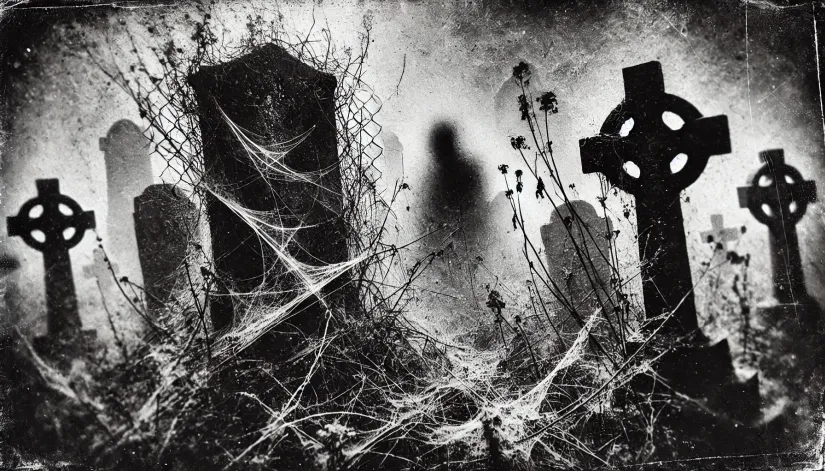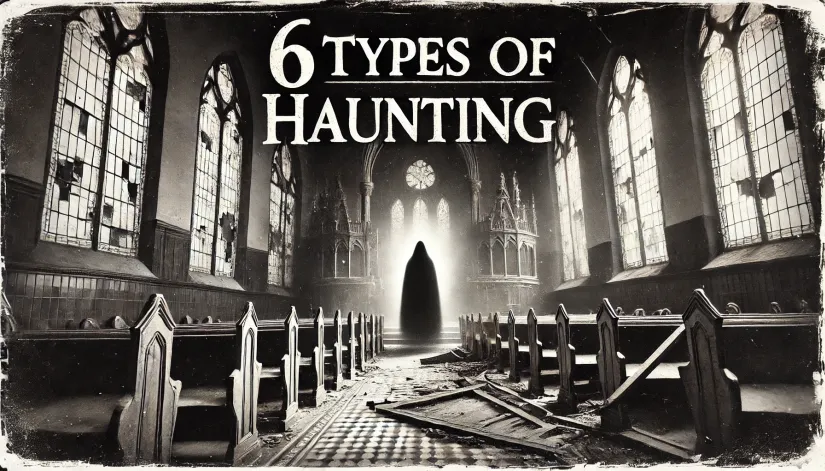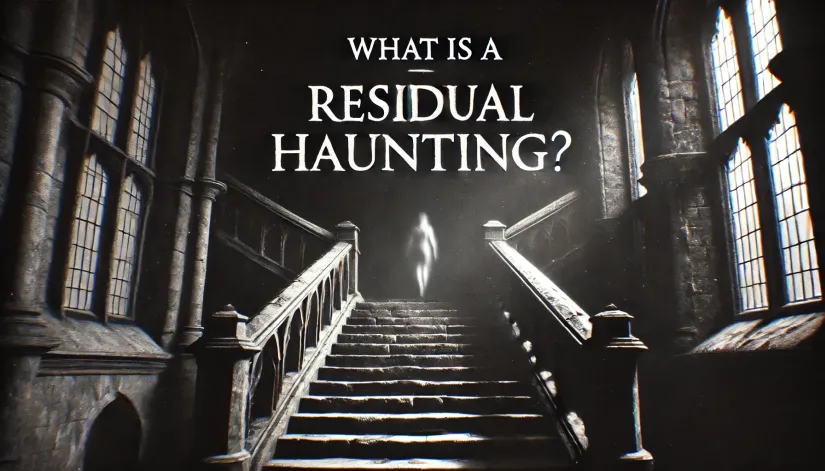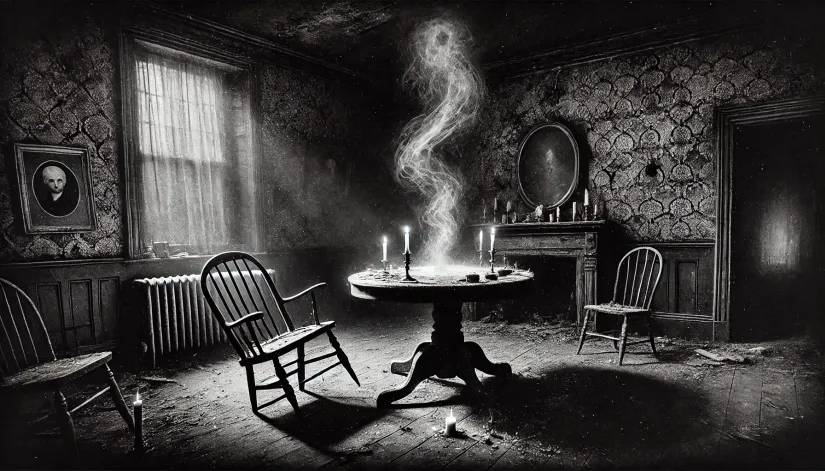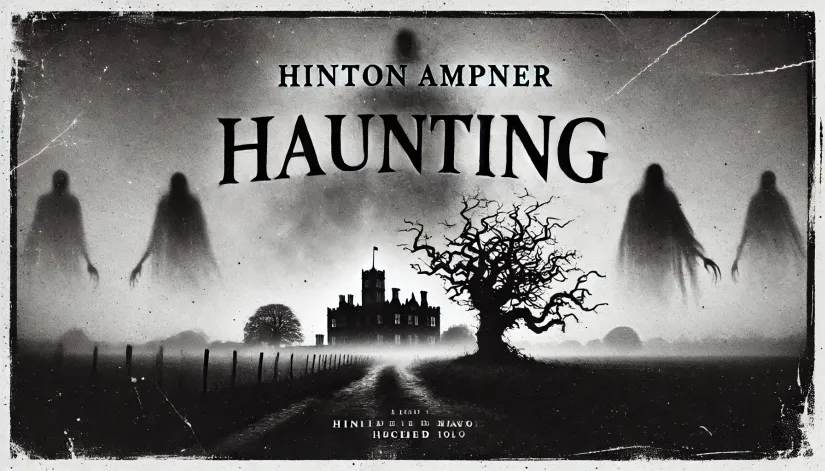Who or what is Abaddon, the “Angel of Destruction” and “Lord of the Abyss“?
Who is this bizarre demon (or angel, according to others) mentioned in most sacred religious texts and demonology? An agent of divine wrath or a demonic ruler?
Abaddon’s name reverberates through the corridors of biblical lore and demonology. It invokes destruction, chaos, and divine judgment.
However, his myth spans both the Old and New Testaments. Both books mention him as a place of ultimate destruction. Later, the “Book of Revelation” personifies him as a powerful being.
In this article:
What Does the Name Abaddon Mean?
Its name’s origin is deeply rooted in ancient languages. According to linguists, the word “Abaddon” comes from the Hebrew “Avaddon” (אֲבַדּוֹן)—which translates to “destruction” or “ruin.”
In the Hebrew Bible, the term is oftentimes synonymous with the realm of the dead—with Sheol—a place of eternal shadows where the dead linger.
So, he is not just a celestial being. It’s also a place. And not just any place. It’s Sheol itself.
While it may sound weird, this portrayal reflects Abaddon’s destructive and final nature. A symbol of not just physical death. But the total obliteration of existence.
In the Greek translation (the Septuagint) of the Hebrew Bible, “Abaddon” was rendered as “Apollyon” (Ἀπολλύων).
It means “The Destroyer.” A fitting translation. This Greek version enforces Abaddon’s identity as a harbinger of destruction.
However, the phonetic link between “Apollyon” and the Greek god Apollo—a deity associated with the sun, plague, and prophecy—has led to some fascinating (albeit controversial) interpretations.
While Apollo was not inherently malevolent, the early Christians might have demonized his image. How? Simple. They associated Apollo with the grotesque figure of a demon.
| Attribute | Description |
|---|---|
| Aliases | Apollyon, Angel of the Abyss, The Destroyer, Angel of Death |
| Titles | King of the Bottomless Pit, Angel of Destruction |
| Race | Fallen Angel |
| Pantheon | Abrahamic |
| Personifies | Destruction, Judgment, the Abyss |
| Appearance | Sometimes a powerful angel with destructive features; occasionally associated with locusts |
| Abilities | Commanding the locusts of the Abyss; tormenting sinners; associated with divine retribution and the Last Judgment |
| Equipment | Sword, destructive powers |
| Associated Elements | Fire, sometimes sulfur as a symbol of Hell |
| Gem/Crystal | Obsidian, Black Tourmaline |
| Associated Figures | Jesus Christ (in eschatological interpretations), Satan (as a comparable figure), John the Apostle (visionary) |
| Astrological Influence | No specific zodiac connection, as Abaddon is more associated with apocalyptic themes rather than a specific birth period. |
| Summoning Requirements | Typically acts under divine command, no specific summoning |
| Equivalents | Apollo (as god of plague and destruction in some interpretations) |
| Affiliations | Hell, Abyss, Eschatology |
| Alignment | Evil in Christian theology |
| Historical Mentions | Revelation 9:11, Book of Job, Psalms, Proverbs, The Pilgrim’s Progress, Dictionnaire Infernal, various rabbinic and esoteric texts |
How to Pronounce “Abaddon”?
Abaddon’s pronunciation varies slightly depending on linguistic and regional differences. But, the most commonly accepted pronunciation in English is “ə-BAD-ən.”
In some traditions (especially in older English texts), it may also be pronounced “a-BAD-don,” with an emphasis on the first syllable.
The Greek “Apollyon” is generally pronounced “a-POL-ee-on,” with a rolling emphasis on the second syllable.
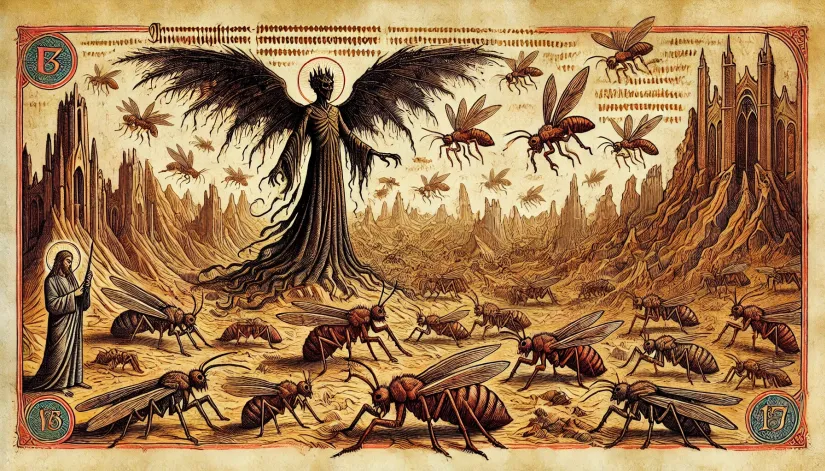
Abaddon in the Bible
Abaddon is mentioned in some key passages of the “Bible.” The first references are in the “Old Testament,” where, as mentioned above, he is primarily a symbol of destruction—often linked with the underworld or the realm of the dead.
Yet, it is in the “New Testament”—particularly in the “Book of Revelation“—that Abaddon is personified as a powerful and frightening entity.
Old Testament References
Job 26:6 (ESV):
“Sheol is naked before God, and Abaddon has no covering.”
In this verse, Abaddon is cited alongside Sheol. However, his destructive force lies bare before the omnipotent sight of God.
Job 28:22 (ESV):
“Abaddon and Death say, ‘We have heard a rumor of it with our ears.'”
Here, Abaddon is personified alongside Death. Perhaps hinting at an intimate knowledge of mortality and the afterlife?
Proverbs 15:11 (ESV):
“Sheol and Abaddon lie open before the Lord; how much more the hearts of the children of man!”
This verse reiterates that nothing is hidden from God’s sight—not even Sheol and Abaddon, the most secretive and destructive of places.
Recommended:
- The Anguished Man: Haunted Painting or Elaborate Hoax?
- Top 11 Most Bizarre and Terrifying Native American Cryptids
- 16 Famous Werewolves in Movies and Television
Proverbs 27:20 (ESV):
“Sheol and Abaddon are never satisfied, and never satisfied are the eyes of man.”
In this passage, the insatiable nature of Abaddon is compared to human greed and desire. It’s a powerful parallel between the endless nature of destruction and the unending desires of mankind.
New Testament References
Revelation 9:1-2 (ESV):
“And the fifth angel blew his trumpet, and I saw a star fallen from heaven to earth, and he was given the key to the shaft of the bottomless pit. He opened the shaft of the bottomless pit, and from the shaft rose smoke like the smoke of a great furnace, and the sun and the air were darkened with the smoke from the shaft.”
As you can probably see, the tone changes dramatically from the depictions from the Old Testament.
This passage sets the stage for the Abaddon to show up on Earth. As a fallen star, he opens the abyss, unleashing a wave of darkness and destruction upon the Earth.
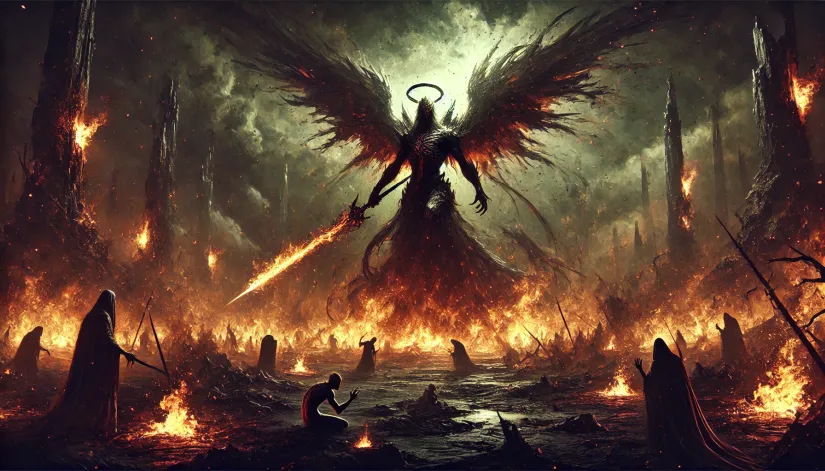
What Kind of Angel is Abaddon?
Abaddon is a celestial being whose identity blurs the line between angelic and demonic.
Mentioned in various sources (including the Bible, demonology texts, and John Bunyan’s “The Pilgrim’s Progress“), he is often described as an “Angel of the Abyss” (Revelation 9:11), holding a pivotal role in apocalyptic visions.
However, interpretations of his nature vary widely.
Some view him as a servant of God (executing divine judgment). On the other hand, others portray him as a fallen angel (leading legions of infernal beings in destruction).
Biblical and Theological Interpretations
Which leads us to another fascinating subject: the nature of Abaddon. Interpretations vary significantly across different Christian traditions.
A Fallen Angel?
Some traditions—particularly within certain branches of Christianity—view Abaddon as a fallen angel, closely aligned with Satan. According to the hierarchy of Hell and the classification of demons, he is also one of Satan’s high-ranking officers.
This interpretation sees Abaddon as a malevolent entity. He leads demonic forces in the end times. He’s also a close supporter of Satan’s agenda of destruction and torment.
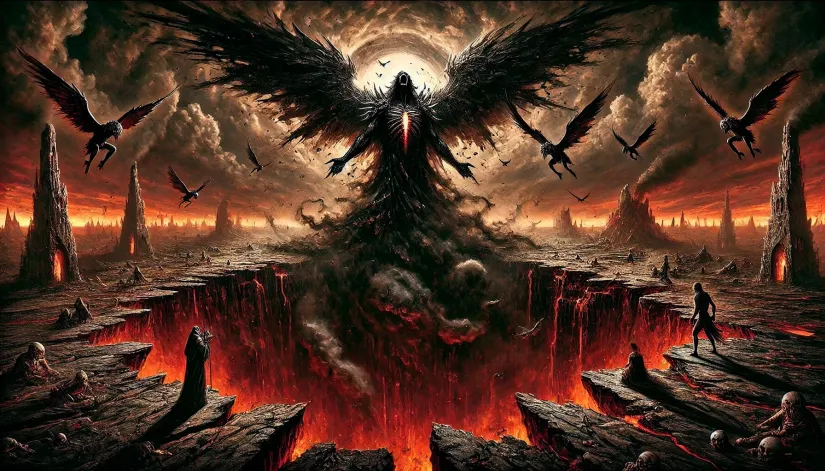
A Servant of God?
In contrast, other interpretations—especially within the Methodist tradition—consider Abaddon as an angel of God rather than a demon.
According to this view, Abaddon is an agent of divine judgment, carrying out God’s will by unleashing destruction upon the unrepentant and sinful during the end times.
This perspective suggests that Abaddon’s terrifying actions are not inherently evil. He is, instead, part of a divine plan to execute judgment and bring about the fulfillment of prophecy.
Symbolic Interpretation
Another variation sees Abaddon as a symbolic figure. Perhaps as a representation of the very concept of divine retribution rather than an actual being.
This view is often aligned with the idea that the Book of Revelation (filled with vivid and symbolic imagery) uses characters like Abaddon to communicate deeper spiritual truths about the consequences of sin and the eventual triumph of good over evil.
Revelation 11:15 (ESV):
“Then the seventh angel blew his trumpet, and there were loud voices in heaven, saying, ‘The kingdom of the world has become the kingdom of our Lord and of his Christ, and he shall reign forever and ever.'”
Revelation 20:10 (ESV):
“And the devil who had deceived them was thrown into the lake of fire and sulfur where the beast and the false prophet were, and they will be tormented day and night forever and ever.”
Jehovah’s Witnesses’ Interpretation
Jehovah’s Witnesses have quite a unique perspective regarding Abaddon. According to them, “Abaddon” may be a title for Jesus Christ after his resurrection.
Jehovah’s Witnesses’ belief is largely based on their reading of Revelation 20, where the angel with the key to the abyss is seen as a representative of God.
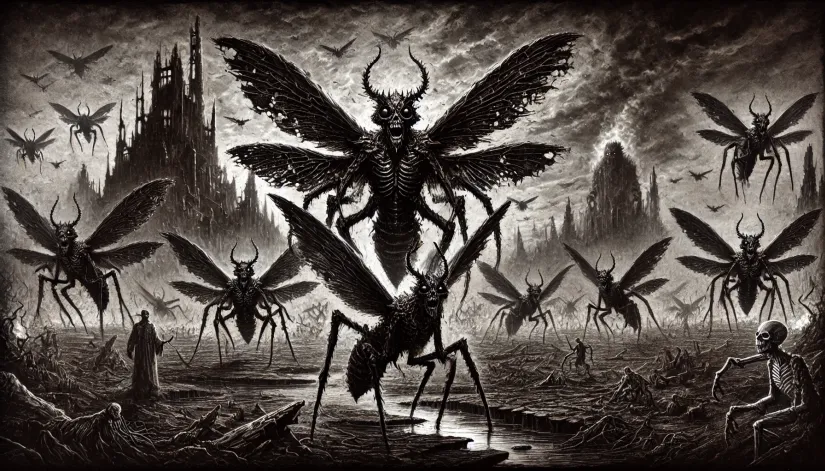
What Are Abaddon’s Powers?
As depicted in the Bible, Abaddon wields a terrifying array of powers. All closely tied to his role as the Ruler of the Abyss.
Torture and Destruction
Abaddon’s most feared power is his command over the demonic locusts.
In the same Book of Revelation, Abaddon is described as the king of the demonic locusts that emerge from the abyss after the fifth trumpet is sounded:
Revelation 9:3-6 (ESV):
“Then from the smoke came locusts on the earth, and they were given power like the power of scorpions of the earth. They were told not to harm the grass of the earth or any green plant or any tree, but only those people who do not have the seal of God on their foreheads. They were allowed to torment them for five months, but not to kill them, and their torment was like the torment of a scorpion when it stings someone. And in those days people will seek death and will not find it. They will long to die, but death will flee from them.”
Abaddon’s dominion is vividly illustrated here.
These locusts, under Abaddon’s rule, are clearly no ordinary creatures. They are given the power to torment humans. However, this power is restrained by divine decree. They can torment their victims for five months. But never kill them.
The suffering is the punishment. Excruciating pain, akin to the sting of a scorpion. And the suffering is so intense that those afflicted will wish for death. However, death will forever elude them.
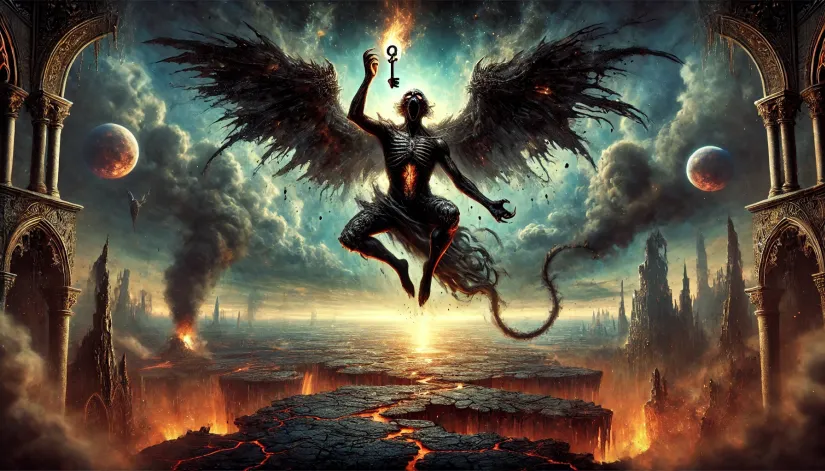
Guardian of the Abyss
Abaddon is sometimes portrayed as the Guardian or Gatekeeper of the Abyss. This role implies that he has the power to confine and release demonic entities or souls trapped in the abyss.
As the angel with the “key to the bottomless pit,” Abaddon controls the gateway to the abyss.
Immortality and Invulnerability
As a high-ranking celestial (or demonic being), Abaddon is believed to possess immortality and invulnerability. This means that, unlike humans, he cannot be killed or destroyed by conventional means.
His existence is eternal, and he remains unscathed by the physical limitations or weaknesses that mortal beings experience. This power makes him a perpetual threat in both spiritual and eschatological contexts.
Master of Deception and Temptation
Abaddon’s role as a Master of Deception and Temptation is a significant aspect of his character—particularly in Christian demonology and literary interpretations.
This portrayal often aligns him with other demonic figures who seek to mislead, corrupt, and ultimately destroy souls through deceit.
Here are some examples:
The Pilgrim’s Progress by John Bunyan
One of the most well-known literary depictions of Abaddon (under the name Apollyon) as a deceitful figure is found in John Bunyan’s The Pilgrim’s Progress.
In this classic allegory, Apollyon confronts the protagonist, Christian, during his journey to the Celestial City. Apollyon attempts to deceive and discourage Christian by questioning his faith, mocking his journey, and offering false promises.
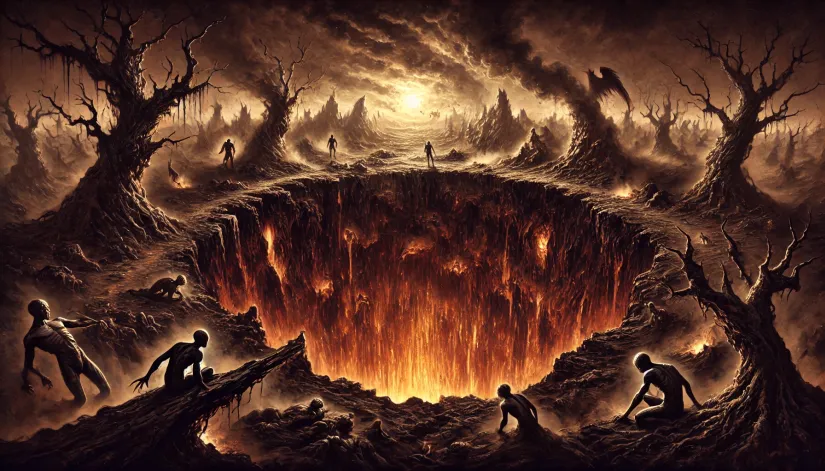
The Lesser Key of Solomon (Goetia)
In demonology—particularly in “Goetia” (specifically in the chapter “The Lesser Key of Solomon”)—Abaddon is sometimes associated with other spirits who embody deception.
Although the demon himself is not extensively detailed in “Goetia,” his association with other deceptive entities suggests that he shares cunning and trickery (common among high-ranking demons).
The Testament of Solomon
In “The Testament of Solomon” (an early Christian text attributed to King Solomon), Solomon summoned and questioned various demons about their powers and weaknesses.
While Abaddon is not directly mentioned here, the methods of deception and temptation described by other demons reflect similar strategies used by Abaddon in later writings.
For instance, the demons in this text often brag about leading humans into sin through lies, seduction, and false promises. These tactics align with the deceptive nature attributed to Abaddon in other sources.
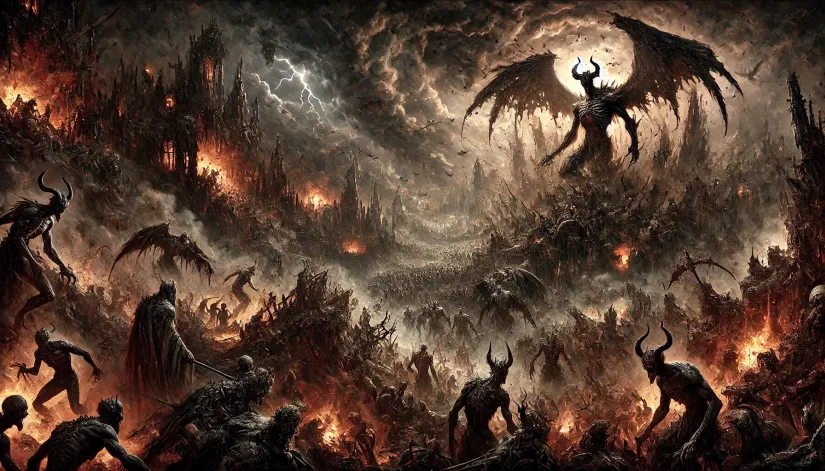
Abaddon in Other Religious Contexts
While Abaddon does not have a direct counterpart in Islamic tradition, the concept of a destructive force associated with the end times does exist.
In Islamic eschatology, the figures of Dajjal (the false messiah) and Gog and Magog represent the forces of chaos and destruction that will be unleashed before the Day of Judgment.
Although these figures differ from Abaddon’s specifics, they function similarly in the Apocalypse narrative. They all serve as harbingers of destruction and divine retribution.

